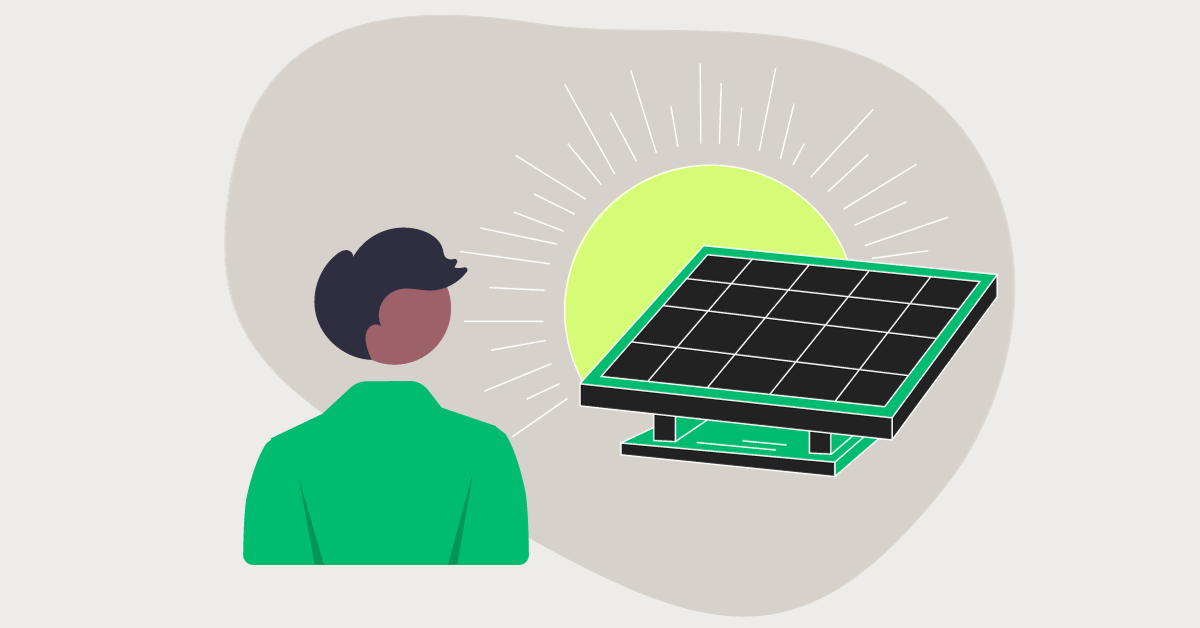How Does Solar Energy Work?

Transitioning to solar energy is a step towards a sustainable future, however understanding how it works might seem daunting at first. This article is part of a series of articles that are part of the 2023 Homeowners Guide to Solar Energy that will walk you through every step of the process and share some hidden secrets that you won’t hear from other solar install companies.
This guide aims to simplify the solar energy process, explaining how home solar panels transform sunlight into electricity. By exploring the photovoltaic effect, solar cells, inverters, and net metering, you'll gain the knowledge needed to appreciate the value and efficiency of solar energy.
Solar Panel Basics
A home solar panel system is your personal gateway to harnessing solar energy. Figuring out how many solar panels are needed for your home depends on factors such as size and shade, but all solar panels function in the same basic way. They are like sponges, soaking up the sun's rays from your rooftop or backyard.
These panels contain special cells that capture sunlight, setting the stage for its transformation into electricity. It's the first, essential step in utilizing solar power, turning a sunny day into a source of clean, green energy right at your home.
How Solar Cells Work
The two most common types of solar cells are monocrystalline cells and polycrystalline cells - however, the vast majority of newly made solar panels utilize monocrystalline cells. In fact, by 2030 the market share of monocrystalline cells is expected to grow to nearly 95%.
Solar cells are where the magic happens, transforming sunlight into electricity. Most solar cells are made from the element silicon, a nonmetal semiconductor adept at absorbing and converting sunlight into electricity. This versatile material isn't just confined to solar cells; it's a key component in nearly every computer globally.
The Photovoltaic Effect
The photovoltaic effect is solar power's core science. This process is the cornerstone of converting sunlight into usable energy, making solar panels more than just sun-soakers, but electricity generators. When sunlight hits a solar cell, it excites electrons, creating a flow of electricity called a direct current (DC).
It's like a sun-powered dance, where sunbeams hit the cell, stirring up electrons, which then move in rhythm, forming the electric current.
Converting with Inverters
Following the photovoltaic dance, the direct current (DC) generated is not yet suited for typical household use. Inverters play a crucial role in this stage of the solar energy process. They convert the DC from solar cells into alternating current (AC), which is the standard form of electricity used in homes and businesses.
This conversion is essential for seamlessly integrating solar energy into our existing electrical systems, making solar power a practical and efficient energy choice
Battery Storage and Grid Connection
After the inversion from DC to AC, the electricity is either used immediately or needs to be stored for later use. Solar batteries store unused electricity, providing power during nighttime or cloudy days. On the other hand, grid connection allows excess solar energy to be fed back into the local electricity grid.
This not only provides a backup when solar energy is scarce but can also earn you credits from your utility company. Both storage and grid connection are vital for optimizing solar energy utilization, ensuring that none of the captured sunlight goes to waste, and making solar power a reliable energy choice.
Understanding Net Metering
Net metering is a solar perk that lets you share your excess solar energy with the local grid. When your solar system produces more electricity than needed, that extra power is sent to the grid, and you get credit for it. Then, when the sun's not shining, you can pull electricity from the grid using these credits, essentially using the grid as a giant battery.
Net metering makes solar power more economical and promotes renewable energy use, making the sun's generosity beneficial not just for you, but for your community too.
Final Words About Solar Energy
Solar energy unfolds as a journey from sunlight to usable power with each stage, from solar panels to net metering, playing a crucial role. By harnessing solar, you embrace a sustainable, economical energy alternative. This guide sheds light on the solar process, aiming to clear the path for your solar transition. With the knowledge gained, the step towards solar becomes less daunting and more exciting.
So what’s the next step? Choosing a reputable local solar installer is the first step in ensuring a smooth and successful transition to renewable energy. A seasoned installer will not only provide high-quality work but also valuable insights on the best solar solutions for your specific needs.
Get in contact with us at (877) 937-4786. Ready to learn more and take the next step in your solar journey? Click the link below to read our Homeowner’s Guide to Solar Energy.